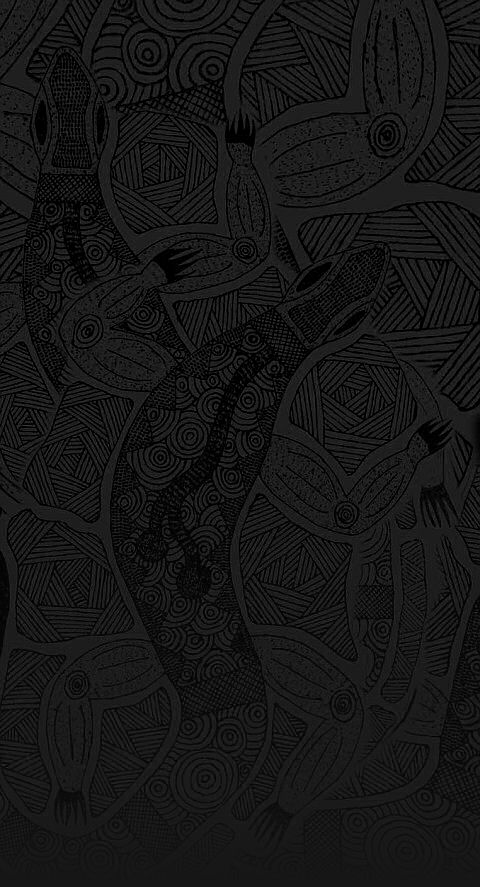
Massacres
"Many more died beyond prying eyes."
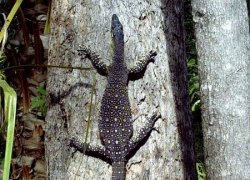 The Aboriginal People of East Gippsland fought against the European invasion of their land. However the technical superiority of the Europeans’ weapons gave them an absolute advantage.
The Aboriginal People of East Gippsland fought against the European invasion of their land. However the technical superiority of the Europeans’ weapons gave them an absolute advantage.
It is extremely difficult to be certain about the real death toll as so few records still exist or were even made at the time. Diseases introduced from the 1820s by European sealers and whalers also caused a rapid decline in Aboriginal numbers. The following list was compiled from such things as letters and diaries for an exhibition called simply "Koorie" which was mounted by the Museum of Victoria in 1991.
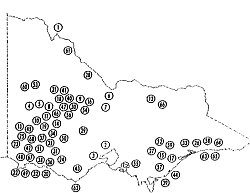 This map of Victoria shows the location of known killings of Aboriginal people by Europeans for the 18 years between 1836 and 1853. The deaths of several thousand people are represented. Many thousands more died beyond prying eyes.
This map of Victoria shows the location of known killings of Aboriginal people by Europeans for the 18 years between 1836 and 1853. The deaths of several thousand people are represented. Many thousands more died beyond prying eyes.
-
1840 - Nuntin - unknown number killed by Angus McMillan's men
-
1840 - Boney Point - "Angus McMillan and his men took a heavy toll of Aboriginal lives"
-
1841 - Butchers Creek - 30-35 shot by Angus McMillan's men
-
1841 - Maffra - unknown number shot by Angus McMillan's men
-
1842 - Skull Creek - unknown number killed
-
1842 - Bruthen Creek - "hundreds killed"
-
1843 - Warrigal Creek - between 60 and 180 shot by Angus McMillan and his men
-
1844 - Maffra - unknown number killed
-
1846 - South Gippsland - 14 killed
-
1846 - Snowy River - 8 killed by Captain Dana and the Aboriginal Police
-
1846-47 - Central Gippsland - 50 or more shot by armed party hunting for a white woman supposedly held by Aborigines; no such woman was ever found
-
1850 - East Gippsland - 15-20 killed
-
1850 - Murrindal - 16 poisoned
-
1850 - Brodribb River - 15-20 killed
In the 1830s, when Europeans first entered Gunaikurnai country, there were many thousands of people living in the Gunaikurnai tribal lands. Within 20 years, after battles, introduction of diseases and massacres at the hands of Angus McMillan and others, there were an estimated less than one hundred Gunaikurnai remaining in Gunaikurnai lands. Many more died beyond prying eyes.
These massacres were unlawful, grossly disproportionate reprisals by European settlers for the spearing of livestock.
Stone spears no match for guns
Gippsland squatter Henry Meyrick wrote in a letter home to his relatives in England in 1846:
The blacks are very quiet here now, poor wretches. No wild beast of the forest was ever hunted down with such unsparing perseverance as they are. Men, women and children are shot whenever they can be met with… I have protested against it at every station I have been in Gippsland, in the strongest language, but these things are kept very secret as the penalty would certainly be hanging… For myself, if I caught a black actually killing my sheep, I would shoot him with as little remorse as I would a wild dog, but no consideration on earth would induce me to ride into a camp and fire on them indiscriminately, as is the custom whenever the smoke is seen. They [the Aborigines] will very shortly be extinct. It is impossible to say how many have been shot, but I am convinced that not less than 450 have been murdered altogether.
This sad decimation was followed by nearly 100 years of official attempts to separate Aboriginal people from their culture and heritage.
Maps
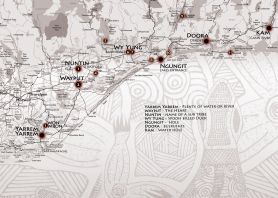
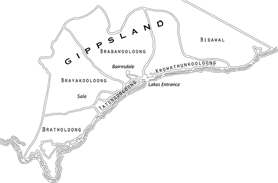
Contact
Krowathunkooloong Keeping PlaceGippsland and East Gippsland Aboriginal Co-operative 37 - 53 Dalmahoy Street
Bairnsdale
Tel: (03) 5152 1891
Visitor Information Centres Orbost (03) 5154 2424
Lakes Entrance (03) 5155 1966
Bairnsdale (03) 5152 3444
Maffra (03) 5141 1811
Sale 1800 677 520
Sites
- white woman's waterhole
won wron state reserve - the lagoon
sale common state game reserve - the knob reserve
stratford - ramahyuck cemetery
perry bridge - den of nargun
mitchell river national park - krowathunkooloong keeping place
bairnsdale - howitt park
bairnsdale - legend rock
metung - buchan caves
buchan - burnt bridge reserve
lake tyers forest park - salmon rock and gunai boardwalk
cape conran

Please treat all sites along the trail with respect and care to ensure they are preserved for future generations.
Development of the Bataluk Cultural trail is a joint initiative of the Far East Gippsland Aboriginal Corporation, Gippsland and East Gippsland Aboriginal Co-operative, Lake Tyers Aboriginal Trust, Moogji Aboriginal Council, Ramahyuck Aboriginal Corporation, East Gippsland Shire Council and Wellington Shire Council.